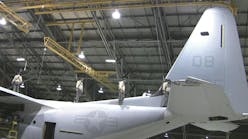If you have ever had an employee get injured on the job you know workplace safety is a critical part of your success as a business. Aviation is filled with wonderful machines that can cause serious injury. If improving safety or creating a written safety plan is on your to-do list, I’ve have a few steps that may help.
Get employees involved. Involving employees in the safety process allows them to demonstrate their commitment to the company while creating buy-in to the process. Start with a survey to identify the issues that matter most to your workers and where they feel improvement is needed. Involve employees in safety planning. Identify the preferred practices for each area of your business.
Identify and report risk. The process of eliminating a hazards starts with identifying and reporting them. Encourage employees to enter risks or safety concerns into a common system.
Get the most from your managers and supervisors. Managers and supervisors have the most direct access to employees. Their actions, reactions, and attitudes can have a huge impact on employees’ safety performance. Make sure your managers and supervisors:
- Routinely discuss safety at staff and employee meetings;
- Attend and participate in safety committee meetings;
- Conduct facility walkarounds, noting preferred practices or areas in need of improvement;
- Use coaching and feedback to encourage safe behaviors;
- Launch accident and incident investigations as soon as possible and follow up to identify corrective actions; and
- Make it clear to employees that they may shut down an operation if they believe conditions are unsafe or unhealthful.
Document the plan. OSHA considers a written safety and health program the gold standard. So do insurance companies. If you don’t have a plan developed, create one. Communicate the statement to all employees, customers, contractors, and suppliers and feature it on your website. Solidify your safety policies and practices into a document that is easy for managers and employees to consult and actually use. A plan that sits on the shelf and collects dust isn’t worth the paper it is printed on.
Be prepared. Emergencies don’t just happen to the FBO or maintenance shop at the other end of the airport. You must be prepared for unexpected events. An emergency plan should be inclusive and reflect all possible contingencies you can think of. It should be site-specific and based on a thorough hazard assessment as well as an understanding of risks specific to location, weather patterns, etc.
Use insurance company and broker resources. Most insurance companies offer free resources and services to assist in developing safety and risk mitigation plans. If you haven’t taken advantage of these service don’t wait. Your aviation insurance broker should be telling you about these services and promoting them. If not, contact your broker and ask. If they don’t know about these services, or don’t offer them through their brokerage, it may be time to find a new broker.
An idea without action is a daydream
We are now half-way through 2016. Take action on your desire to have a written or refreshed safety plan by the end of the year. Don’t wait. Always be watchful for education and training opportunities for your employees. A reduction or elimination of work-related injuries and claims will reduce your insurance premium, make your business more profitable, and improve morale. You’ll be happy you did.




